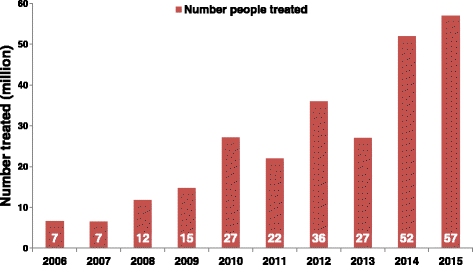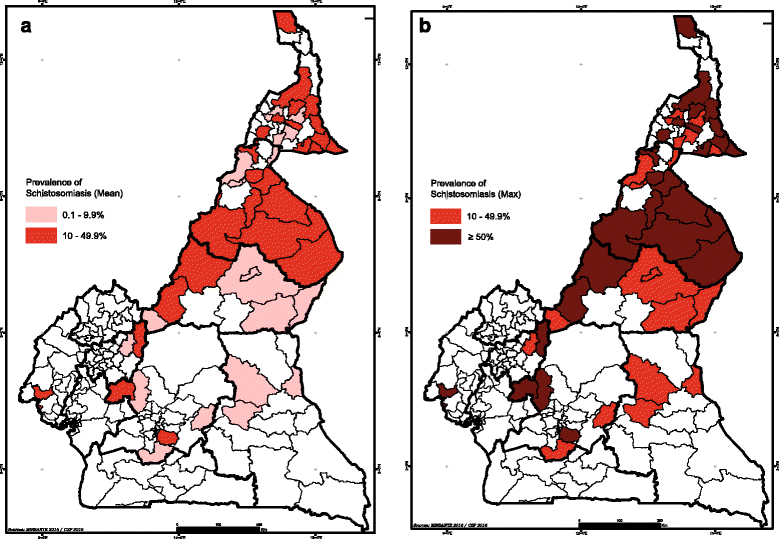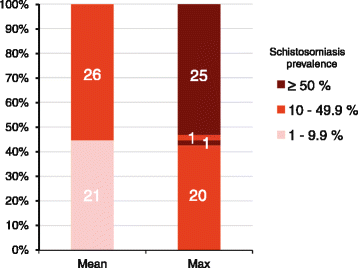Moving from control to elimination of schistosomiasis in sub-Saharan Africa: time to change and adapt strategies
- PMID: 28219412
- PMCID: PMC5319063
- DOI: 10.1186/s40249-017-0256-8
Moving from control to elimination of schistosomiasis in sub-Saharan Africa: time to change and adapt strategies
Abstract
Schistosomiasis is a water borne parasitic disease of global importance and with ongoing control the disease endemic landscape is changing. In sub-Saharan Africa, for example, the landscape is becoming ever more heterogeneous as there are several species of Schistosoma that respond in different ways to ongoing preventive chemotherapy and the inter-sectoral interventions currently applied. The major focus of preventive chemotherapy is delivery of praziquantel by mass drug administration to those shown to be, or presumed to be, at-risk of infection and disease. In some countries, regional progress may be uneven but in certain locations there are very real prospects to transition from control into interruption of transmission, and ultimately elimination. To manage this transition requires reconsideration of some of the currently deployed diagnostic tools used in surveillance and downward realignment of existing prevalence thresholds to trigger mass treatment. A key challenge will be maintaining and if possible, expanding the current donation of praziquantel to currently overlooked groups, then judging when appropriate to move from mass drug administration to selective treatment. In so doing, this will ensure the health system is adapted, primed and shown to be cost-effective to respond to these changing disease dynamics as we move forward to 2020 targets and beyond.
Keywords: Control; Diagnostics; Elimination; Mapping; Mass drug administration; Preventive chemotherapy; Schistosomiasis; Sub-Saharan Africa.
Figures




References
-
- World Health Organization . World Health Assembly Resolution WHA 66.12 Neglected tropical diseases. Geneva: World Health Organization; 2013.
-
- Molyneux DH, Savioli L, Engels D. Neglected tropical diseases: progress towards addressing the chronic pandemic. Lancet. 2016. http://dx.doi.org/10.1016/S0140-6736(16)30171-4. - DOI - PubMed
Publication types
MeSH terms
LinkOut - more resources
Full Text Sources
Other Literature Sources

